
The golden period in the history of one-day international cricket commenced with the 1992 World Cup. It was the first time that a World Cup tournament was played in coloured clothing, night cricket became a bit more mainstream and more importantly, there were plenty of strategic changes that made the game far more exciting for the general public.
For instance, New Zealand's Mark Greatbatch revolutionised the role of the opening batsman in one-dayers by taking advantage of the field restrictions during the first 15 overs. In the years following the 1992 World Cup, many other batsmen became influential in their own ways and shaped the game till the start of the next World Cup in 1996. Here is a look at the most prolific batsmen in that period:
#5 Aamer Sohail
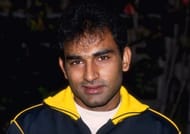
The former Pakistan captain formed a superb opening combination with fellow left-hander Saeed Anwar during his pomp, and in the period between the two World Cups in question, he was one of the most prolific batsmen in the world in ODIs. Sohail was not the most graceful batsman by any means, but was highly effective and could go after the bowling right from the outset.
During the aforementioned period, Sohail played in 70 games and struck 2218 runs, at an average of 32.61 and a strike rate of 68.24. He scored only two centuries during that great run but made up for it by notching up 14 half-centuries. Pakistan were the reigning world champions at the time and Sohail almost always helped them get off to a good start.
#4 Aravinda de Silva
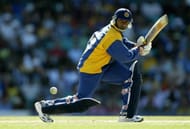
Aravinda de Silva was one of the finest batsmen of the 1990s and his performances were instrumental in Sri Lanka's rise in one-day international cricket.
De Silva's technique, temperament and the ability to negotiate all sorts of bowling attacks made him the 4th highest run-scorer during this period, as Sri Lanka claimed remarkable victories against Pakistan and Australia.
He compiled 2312 runs between the two global events, scoring at a frenetic strike rate of 81.26 (the highest among all the batsmen listed here), while his average stood at a respectable 35.03.
Along the way, he scored 2 centuries and as many as 16 half-centuries, evolving into one of the most influential members of the Sri Lankan batting line up. It all culminated in his superb century in the World Cup final against Australia at Lahore, as the Lankans won the coveted trophy for the first and so far, only time.
#3 Mark Waugh
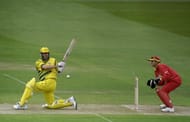
Australia were the most consistent sides in one-day internationals for the most part of the 1990s and in Mark Waugh, they had an opening batsman who could give a rousing start.
Waugh's graceful stroke play, against both pace and spin, made him the world's top opening batsman in the 1990s and during this particular period, he scored 2602 runs at an average of almost 39 in 73 games.
Waugh wasn't only a boundary hitter par excellence, but was also a player who was adept at bringing up a century when he got a start. Hence, it was not a surprise that he brought up 5 centuries in this particular time span. In addition to that, he scored 19 half-centuries, ending as one of Australia's greatest one-day international batsmen.
#2 Inzamam-ul-Haq
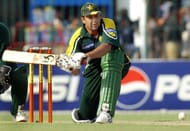
Pakistan great Inzamam-ul-Haq announced himself on the world stage by scoring a 37-ball 60 against New Zealand in the semi-finals of the 1992 World Cup, helping Pakistan win their first global title.
Over the next few years, till the next World Cup came along, he continued in the same vein and emerged as the 2nd highest run scorer in one-day internationals in the world. He scored 2675 runs at an excellent average of 41.79 in 79 matches, including 2 centuries, in addition to 21 half-centuries.
What stood out during that spell was Inzamam's outstanding skills as a boundary hitter as he hit 225 fours and 29 sixes. His sixes tally is joint highest with Aravinda de Silva.
Throughout that period of Pakistan's reign as the world champions, Inzamam was the batsman who often held the innings together.
#1 Brian Lara
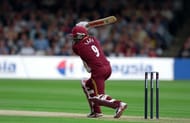
Brian Lara was the best batsman in the world in the during this phase, and it would not come as a surprise to many that he was the top scorer in the world in one-day internationals between the 5th and 6th World Cups.
Lara was in imperious form during this period and dominated almost all bowling attacks that he came up against. He scored 11 short of 3000 runs in only 68 games (fewest among all the batsmen listed here) at a whopping average 49 and a strike rate of 77.13.
Along the way, he scored six centuries and as many as 21 half-centuries to establish an extraordinary dominance against the best. His highest score in that spell was an unforgettable 169 against Sri Lanka at Sharjah, which helped the West Indies score a record 334 in 1995.
Looking for fast live cricket scores? Download CricRocket and get fast score updates, top-notch commentary in-depth match stats & much more! 🚀☄️
